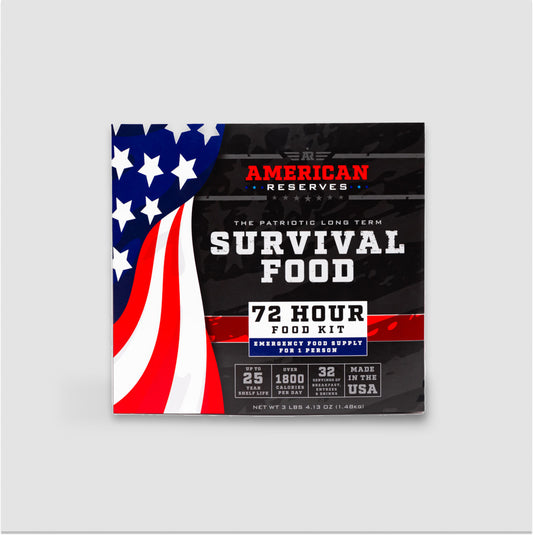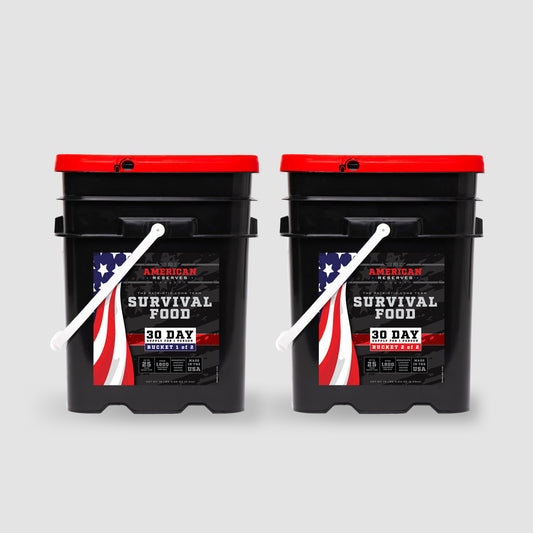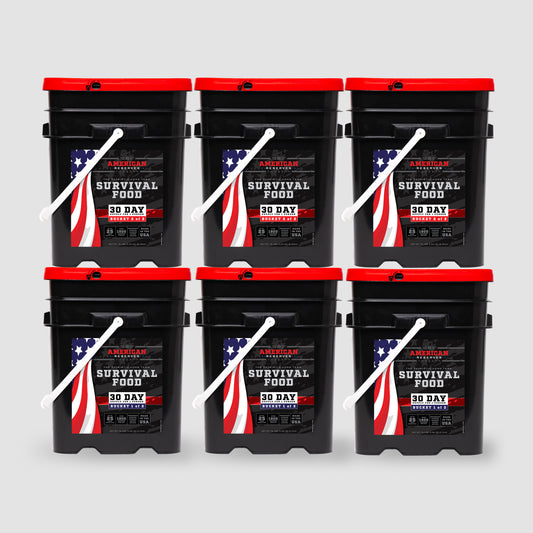
How Long Can You Go Without Food: Survival Tips
In the realm of emergency preparedness, knowing how long you can go without food is a fundamental aspect of survival. For preppers and survivalists, this knowledge is vital for planning and executing comprehensive survival strategies during natural disasters, societal collapse, or other emergencies. This article provides in-depth insights and practical tips to help you navigate periods of food scarcity, ensuring you and your loved ones remain resilient and self-sufficient in the face of adversity.
What Are The Three Stages Of Starvation?
Stage 1: Glycogen Depletion
In the first stage of starvation, the body exhausts its glycogen stores, which are the primary source of quick energy derived from carbohydrates. This phase typically lasts for about 24 hours. During this time, the body relies on the glucose stored in the liver and muscles to maintain normal function and stave off hunger. As glycogen levels drop, the body begins to experience fatigue and decreased physical performance.
Stage 2: Ketosis
The second stage of starvation, known as ketosis, begins when the body starts to break down fats into fatty acids and ketone bodies to provide energy. This stage can last for several days to weeks, depending on the individual's fat reserves. During ketosis, the body shifts from using glucose to using ketones as its primary energy source. This metabolic change helps preserve muscle tissue but can lead to symptoms such as bad breath, nausea, and a decrease in cognitive function.
Stage 3: Muscle and Organ Breakdown
The third and final stage of starvation occurs when fat stores are exhausted, and the body starts to break down muscle tissue and vital organs for energy. This stage is marked by severe physiological damage, including muscle wasting, weakened immune function, and organ failure. If prolonged, this stage can lead to death. Recognizing the signs of this critical phase is essential for implementing urgent survival strategies and seeking immediate medical intervention.
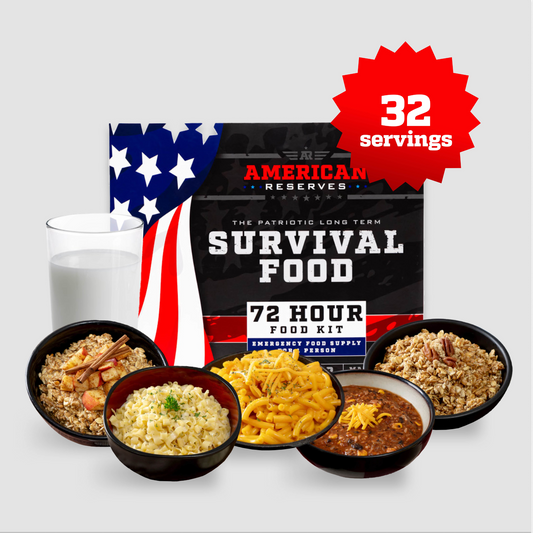
72 Hour Emergency Food and Drink Supply - 32 Servings
$36.99
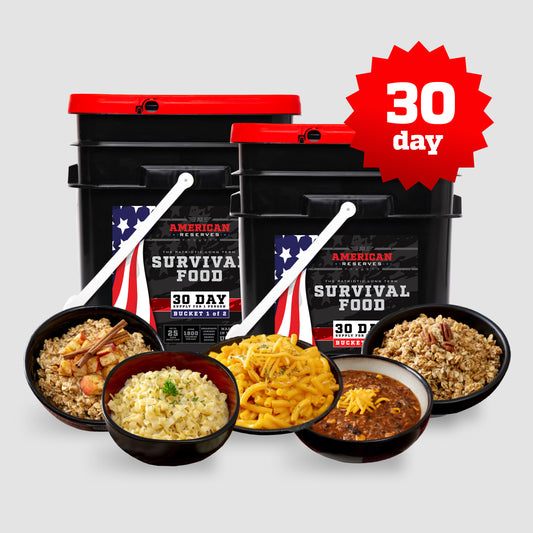
30 Day Emergency Food Supply
$319.99
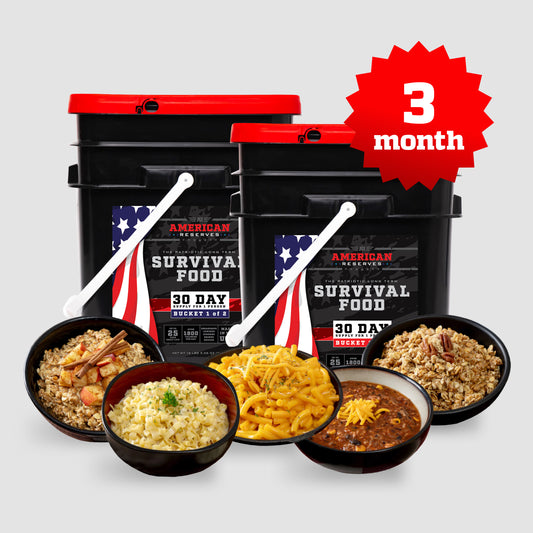
3 Month Emergency Food Supply
$835.00
How Long Can You Go Without Food?
The duration a person can survive without food varies, but generally, the human body can endure approximately three weeks without sustenance. This timeframe is influenced by several factors, including an individual's overall health, hydration levels, body fat percentage, and environmental conditions. During this period, the body undergoes significant physiological changes, transitioning from using glycogen stores to fat reserves and eventually breaking down muscle tissue and vital organs for energy. While hydration and proper water intake are crucial and can extend survival, the lack of food ultimately leads to severe health deterioration and, if not addressed, can result in starvation and death. Understanding these dynamics is vital for anyone facing potential food scarcity, whether in the wild or during emergencies.
What Happens If You Don't Eat For 3 Days But Drink Water?
If an individual does not eat for three days but continues to drink water, the body undergoes significant metabolic changes to adapt to the lack of food. Initially, the body depletes its glycogen stores within the first 24 hours, leading to fatigue and decreased energy levels. As glycogen is exhausted, the body enters a state of ketosis, where it begins to break down fat stores into fatty acids and ketone bodies to use as an alternative energy source. This process helps preserve muscle mass and maintain basic body function. Hydration remains crucial during this period, as water supports essential physiological processes and helps prevent dehydration. While the body can manage without food for a short period, prolonged fasting can lead to nutrient deficiencies, weakened immune function, and other health risks, underscoring the importance of reintroducing food as soon as possible.
What Happens 24 Hours Without Food?
After 24 hours without food, the body begins to experience significant metabolic changes as it shifts from using readily available glucose to alternative energy sources. Initially, the body relies on glycogen stores in the liver and muscles to maintain blood sugar levels and provide energy. As these glycogen reserves are depleted, typically within the first 24 hours, the body starts to break down fat stores into fatty acids and ketone bodies through a process called ketosis. Symptoms including tiredness, irritation, and poor cognitive abilities can follow from this metabolic change. Despite these difficulties, hydration is still very important since water supports vital body processes and lessens some of the negative effects of temporary fasting. Whether from fasting, an emergency, or another event, these adjustments can enable people better control brief episodes of food deprivation, or hunger.
How Does BMI and Metabolism Influence Survival Without Food?
Determining how long someone can live without eating depends critically on metabolism and body mass index (BMI). Usually indicating more fat reserves, which the body can use for energy during food shortages, a higher BMI might help to prolong lifetime. Conversely, individuals with a lower BMI have fewer fat stores and may deplete their energy reserves more quickly. Metabolism also significantly influences survival; those with a faster metabolic rate burn through their energy stores more rapidly, while individuals with a slower metabolism conserve energy and may endure longer without food. Furthermore, varying metabolic efficiency in using muscular tissue and stored fat influences the body's adaptation to extended fasting. Evaluating survival prospects and making emergency or long-term foodless plans depend on these elements.
Survival Tips Without Food
- Stay Hydrated: Drinking water is crucial for maintaining bodily functions and preventing dehydration.
- Conserve Energy: Minimize physical activity to reduce energy expenditure and preserve strength.
- Stay Warm: Maintain body heat by wearing appropriate clothing and seeking shelter to prevent hypothermia.
- Prioritize Rest: Rest as much as possible to conserve energy, reduce calorie consumption, and help the body maintain a caloric deficit.
- Use Fat Reserves: Understand that the body will shift to using fat stores for energy after glycogen is depleted.
- Stay Calm: Stress and panic can increase energy consumption; practice deep breathing and stay focused.
- Monitor Health: Keep an eye on vital signs and be aware of symptoms like dizziness, confusion, or severe weakness.
- Seek Help: If possible, signal for help or move towards populated areas to increase chances of rescue and access to food.
What's The Best Food To Have During a Survival Situation?
In a survival situation, freeze-dried foods and emergency food kits are among the best options to have on hand due to their long shelf life, lightweight nature, and nutritional value. Ideal for quick and effective meal preparation, freeze-dried foods maintain most of their nutrients and taste and are simple to rehydrate with water. Often meant to be calorie-dense and nutrient-dense, survival foods provide the energy and sustenance required during an emergency, therefore ensuring a sufficient consumption of calories. Emergency food kits typically include a variety of meals and snacks that are specifically formulated to meet daily nutritional requirements, ensuring a balanced intake of proteins, carbohydrates, and fats. These options are not only convenient and easy to store but also crucial for maintaining health and energy levels when access to fresh food is limited.
Conclusion
Understanding how long one can go without food and the essential survival tips associated with it is invaluable knowledge for anyone facing potential food scarcity, whether in the wild, during emergencies, hunger strikes, or in extreme environments. By recognizing the stages of starvation, the impact of BMI and metabolism, and the importance of hydration, individuals can better prepare for and endure periods without food. Equipping oneself with freeze-dried foods, survival food, and emergency food kits can significantly enhance one's ability to survive and maintain health during such challenging times. Ultimately, being informed and prepared can make the difference between life and death, fostering resilience and confidence in the face of adversity.
Final Thoughts
At American Reserves, we pride ourselves on our expertise in emergency and survival. Our emergency food supply kits, made from the finest locally sourced ingredients in the USA, provide the essential nutrition you need in critical situations. Trust American Reserves to keep you ready for anything—secure your kit today!
Sources
